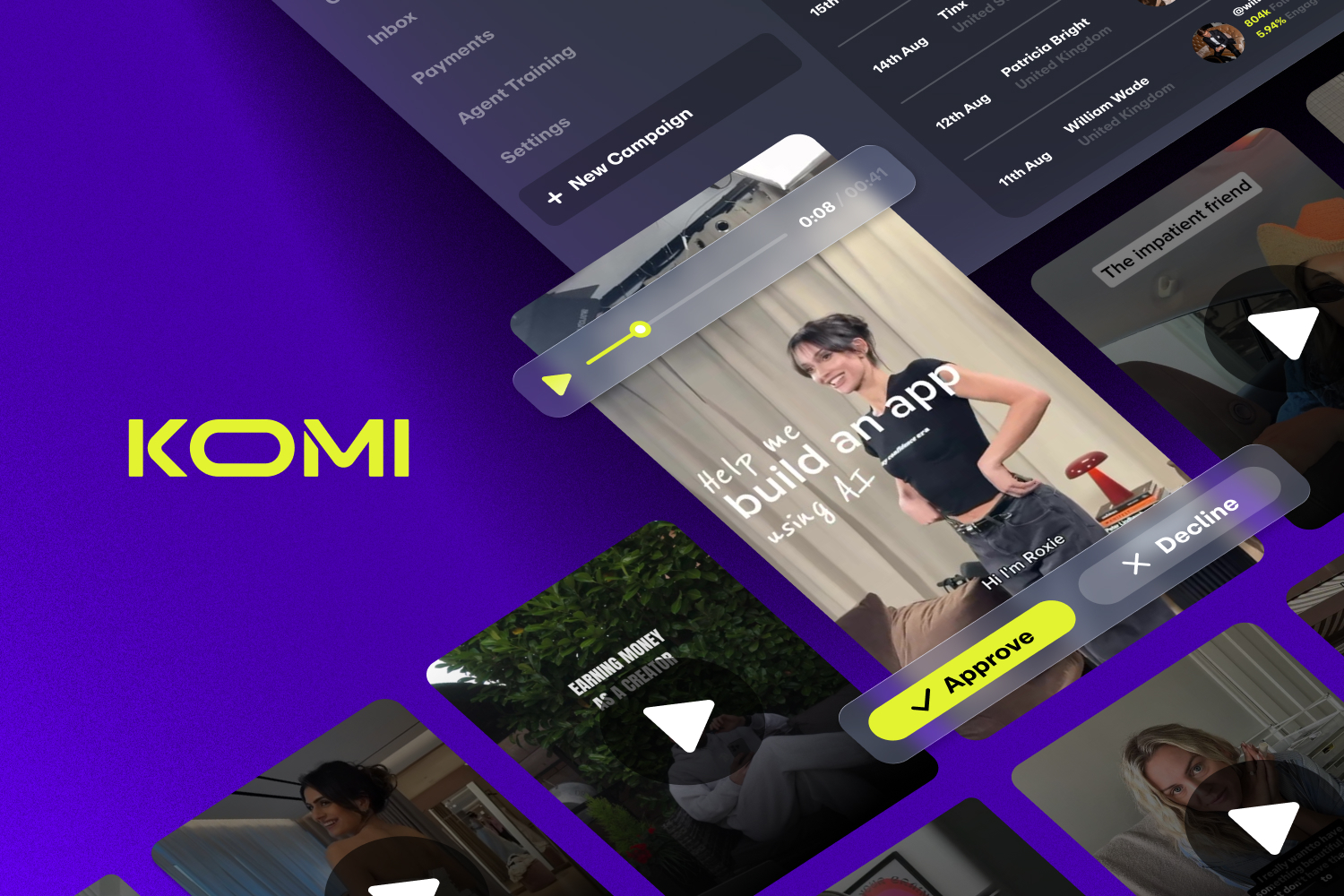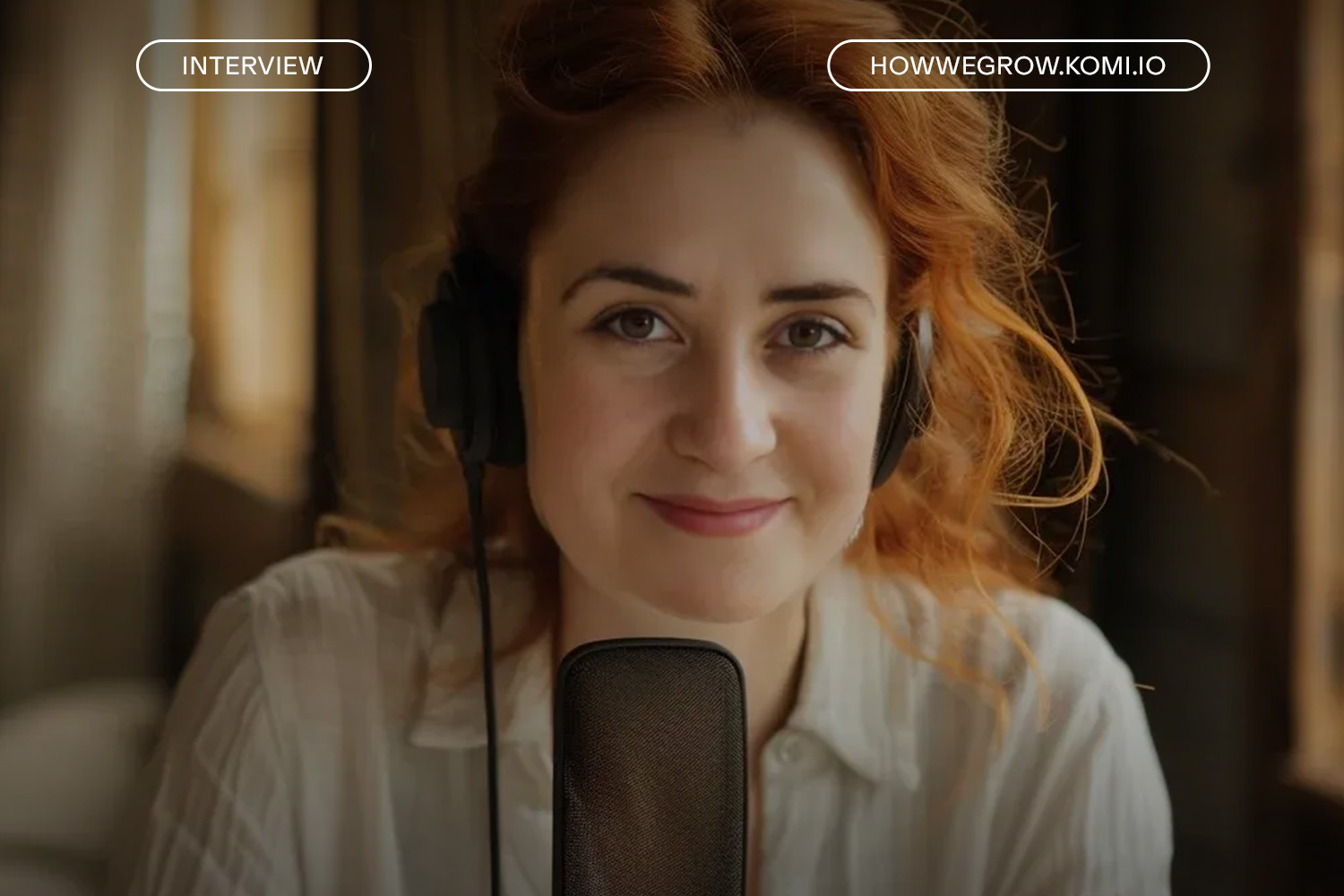A complete guide: How to monetize your content

A thriving creator business needs two things: an audience and an income. And last year, creators were focused on growing their bank accounts. 33% of creators chose to prioritise income in 2023 compared to 25% who went all in on audience growth.
If you’re already creating quality content and sharing stories online, the next logical step is to get compensated for your time and effort — but where do you even start? According to the Creators Calculator, to earn £1,000 a month from your content, you need 100,000 followers on Instagram, two million views on YouTube, or 229 subscribers on Substack.
What the calculator doesn’t tell us, though, is how you can actually earn that £1,000 in the first place. That’s what we’re going to share here.
What is content monetization?
Content monetization is when you earn money from the digital content you’ve created, whether that’s videos, livestreams, blog posts, podcasts, or newsletters. Monetizing your content can refer to accepting money directly through a piece of content, but it most commonly refers to using your content to build an audience and generate sales.
Most creators have multiple revenue streams to create a safe content monetization strategy. If one source peters out or stops being effective, there are other ways to generate revenue to fall back on. Last year, creators were keen to add income streams to their businesses. Branching out to create content on other content monetization platforms can balance out your income, help your audience in new ways, and learn new skills.
7 ways to monetize your content
There’s a banquet of ways you can monetize your online content, from selling online courses and affiliate marketing to creating digital products, generating revenue through an ad network, or making money from social media posts.
As the creator economy grows (we’re at 200 million and counting), so do the ways you can monetize your content creation. And there’s something for everyone, whether you want a hands-off way to earn a side income or want to build an empire of products and services.
1. Ad revenue
One of the most common ways for creators to generate revenue is to take a portion of the income from an ad network. This is particularly popular on YouTube, which allows creators to serve ads at the beginning, middle, and end of their videos when they reach 1,000 subscribers and 4,000 watch hours.
While ad revenue is pretty hands-off, it relies on high numbers. You need around 10,000 views to earn £100-£300 which increases to £1,000-£3,000 for every 100,000 views. Ads payout per video view or click. Per click pays more for each action, but it’s easier to generate views than clicks, so your mileage might vary.

The couple behind the YouTube channel Days We Spendmade around £2,500 from one video via ads — and that number continues to grow by £50 a month.
2. Affiliate marketing
Affiliate sales are another common way for creators to monetize content. This is a unique URL linked to a product or company that earns the creator a slice of commission every time someone buys through it.
The biggest benefit of affiliate marketing is you don’t have to create a product yourself. You can piggyback off the success of other products and promote them to your audience. It helps if the products you promote align with your audience and their needs — for example, an audience of dog lovers is going to be far more receptive to affiliate marketing that promotes organic dog food or dog toys than leather handbags.

Shay Nicole promotes her outfits through Amazon affiliate links and other sponsored content.
3. Sell products
If you’re a dab hand at crocheting cacti or fancy yourself a bit of a fashionista, you can flex your creativity in the form of physical products. There are creators out there selling everything from paint-by-number sets and handmade puppets to mugs and t-shirts.
But if you’d rather keep it all online, digital products might be a better option. This includes downloadables, like ebooks and templates, as well as online courses, masterclasses, and stock photos.
Creating products is a popular option for creators because you don’t need to have a huge audience to make money. The 1,000 True Fans Theory by Kevin Kelly claims that if 1,000 people are willing to give you £100 for a product, you can earn a decent chunk of revenue.
Digital creator Emma Chamberlain has over 15 million followers on Instagram and leverages her audience to sell coffee via Chamberlain Coffee.

4. Brand deals and sponsorships
Brand deals are perhaps the most well-known way that creators make money. Product placements and sponsored content dominate the feeds of celebrities, and now it’s becoming increasingly common for both large and small content creators to do the same.
You make money by partnering with relevant brands and promoting their products to your audience. There are two ways you can get paid for this. Firstly, you can enter a set-fee deal where you get paid a set amount at the start of your brand collaborations, per post, or per month. The second option is to work on an affiliate basis where you get a unique link to share with your audience and take a cut of commission for each sale.
Creator Sophie Habboo partners with USA Pro Women to promote their clothing line.

5. Native platform features
Today, there are dozens of high quality content platforms, all of which come equipped with their own native monetization features, including Snapchat’s Spotlight feature, TikTok’s Creator Fund, and YouTube’s partner program. These social media platforms realised they were making money off creators' hard work and have since implemented ways to pay back the creators who keep their platforms alive.
While you won’t necessarily earn a lot through native monetization strategies, it can be a nice little cushion if you meet the criteria (TikTok requires creators to have 10,000 or more followers and at least 100,000 views over 30 days to qualify for the Creator Fund).
6. Subscriptions and memberships
Subscriptions are a great way to generate recurring revenue from the high quality content you create. Your audience can pay a monthly fee to access your premium content, whether that’s a monthly newsletter, an exclusive blog post, or behind-the-scenes content. Alternatively, creating membership sites can generate income every month. While this has the same foundations as a subscription — your audience pays a (usually) monthly fee — a membership often has an additional element of education or community
Some creator platforms have built-in subscription and membership features. For example, Substack creators can earn recurring revenue via subscriptions, while TikTok’s LIVE Subscription feature lets people show appreciation for free content.
Kayla Jeter runs a monthly newsletter for her fans where she shares exclusive content like events, workouts and workshops.

7. Donations and tips
Finally, you can simply ask your followers to donate or tip you if they like your content. You’ll often see a note tagged on the end of a YouTube video asking subscribers to “consider buying me a coffee if you enjoyed this content”.
Crowdfunding platforms like Patreon make it easy for creators to monetize their content at varying price points. In exchange for a monthly fee, followers can get exclusive access to premium content and additional rewards based on their pricing tier. Other creators accept one-off payments via Buy Me a Coffee or the Tips feature on TikTok.
ASMR artist August ASMR adds a PayPal link in her video captions where subscribers can tip her.

Tips for content monetization
It’s unlikely you’ll start earning millions of pounds overnight, but there are some ways you can enhance your chances of success. Here are our best tips.
Know your audience
It’s incredibly hard to monetize even the highest quality content without a loyal audience. Whether you plan to use sponsored content to make money, run affiliate marketing campaigns, or sell products, you need to have a decent following. If you want to continue to generate revenue, you need to know who your followers are, what they’re interested in, and why they choose to follow you.
The more you know about your target audience, the easier it is to create high quality content that resonates with them and promote products they’ll actually buy. Remember, audience is everything to creators, and it’s so important to nurture those relationships if you want to establish trust and turn followers into loyal fans (and let’s face it, that’s where the big money is).
Define your posting style and strategy
Find out what kind of posts resonate best with your audience. If your chosen creator medium is newsletters, do long or short paragraphs work best? Do people respond better to Monday morning emails or Saturday afternoon ones? It doesn’t have to be a major shift going from creator to money-making creator, but the more you learn about what your audience wants to see from you (and how often), it’s easier to make money.
For example, if you plan on selling products, plot out how many promo posts you need to run each month to hit your money goals.
Be consistent
The most important thing is to be consistent. We’ve all been there: everyone else seems to gain 1,000 new followers overnight, but we’re struggling to get even 10. What these creators don’t tell you is it takes time and consistency to grow your creator brand and start earning money. You might only make a couple of pounds to start with, but every little counts and everyone has to start somewhere.
Don’t rely on any one platform
Imagine if Instagram disappeared one day and took your hard-earned followers with it. It would be a total nightmare. This is why it’s sensible to not put all your eggs in one basket as you never know when that basket might unravel (hello, Vine). Work out a way to drive followers from your social accounts to a newsletter or a platform you actually own.
Construct your creator ecosystem
Creators today tend to use a stack of creator tools. You might be using Patreon for rewards, Instagram to promote products, and Teachable or Thinkific to host your online course. That’s a lot of fingers in a lot of pies.
Instead of having all your content scattered across multiple social media platforms with no central source of truth, bring it all together in a single hub. With KOMI, you can create a page that links to all the creator platforms you use, see your metrics (including how much money you’ve made), and you can even make money through a one-click checkout.
Show me the money: get started with content monetization
The hard work you put into creating and publishing content should be rewarded. When you get compensated for your time and effort, you have the resources to create more premium content, grow your audience, and turn your platform into whatever you want it to be — whether that’s a profitable side hustle or a full-blown business.
Earn like the world’s top creators
Claim your KOMI domain today. Plans start at $10.50 USD/month.


